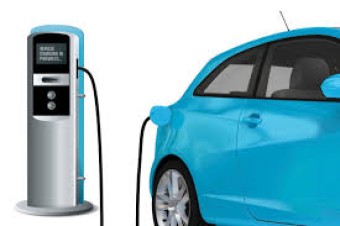IAA and Mercedes-Benz to organize ‘me Convention’
South by Southwest (SXSW) will collaborate with Mercedes-Benz at the International Motor Show in Frankfurt (IAA) in September 2017 to jointly organise the “me Convention”, a conference designed to give fresh momentum to the public debate on relevant future issues.
The “me Convention” will take place from September 15 to 17 in the Festhalle Frankfurt, the traditional stage for the Mercedes-Benz IAA motor show presentation. The day time convention will be complemented by music and other events throughout the city. “Mercedes-Benz is excited to work with SXSW to create a brand new, future-focused event in Germany. With this unique conference, Mercedes-Benz goes far beyond the bounds of traditional motor shows and invites the participants to an exchange of knowledge, opinions and thoughts,” said Dieter Zetsche about the new endeavor.
Hugh Forrest, Chief Program Officer at SXSW, added: “We are honoured to be invited to work with Mercedes-Benz to produce the “ me Convention” at the Frankfurt Auto Show in September 2017. The future of mobility will touch every aspect of the 21st century social fabric, and we look forward to presenting a wide variety of topics that stretch beyond anything one might assume would be offered at an automotive industry event.”
The “me Convention” offers an open and inspiring platform for creative people from many different fields, with the focus clearly on dialogue, interaction, networking, and entertainment. Content at the “me Convention” will cover relevant issues for building the future.
Together with SXSW, Mercedes-Benz has identified five relevant themes along its future strategy CASE (Connected, Autonomous, Shared and Electric):
- New Creation: New ways of thinking, new approaches, new methods and mechanisms of production, as well as the integration of new technologies, will lead us to entirely new designs, products and services.
- New Urbanity: The development and unfolding of new living environments and new infrastructures creates societies with new attitudes, needs and changed behaviour.
- New Leadership: Traditional leadership styles and models are increasingly dying out. Greater freedom, exchange and trust are leading to more productivity, efficiency, flexibility and innovation within companies.
- New Realities: We are creating a new reality: the boundaries between the real and the digital world are becoming increasingly blurred, opening up new ways of living, communicating and consuming.
- New Velocity: Expecting our goods and services to be available on demand, we are accelerating things that previously took a long time to deliver: societies are being transformed, while technological innovations are springing up on an almost daily basis.
The motto of the convention is: #createthenew.
Visitors become participants – the new Mercedes-Benz trade show concept
The “me Convention” is part of the consistent advancement of the trade show presentations of Mercedes-Benz. Today, the brand with the star is represented not only at the classic motor shows, but also at tech and lifestyle platforms such as the Consumer Electronics Show (CES) in Las Vegas, the Mobile World Congress (MWC) in Barcelona, and at the featured speech with Dr. Zetsche at South by Southwest (SXSW) in Austin.
In 2017, the Stuttgart-based brand will open the doors to new dimensions of brand perception at the world’s largest motor show, the IAA Frankfurt: signalling a move away from an exclusively automotive presence, towards a trade show with international convention character that offers the visitor fellowship instead of exhibition, dialogue instead of prestigious presence and inspiration instead of traditional product experience.
Tickets for the three-day “me Convention” go on sale later this spring.
SXSW dedicates itself to helping creative people achieve their goals. Founded in 1987 in Austin, TX, SXSW is best known for its conference and festivals that celebrate the convergence of the interactive, film and music industries. SXSW proves that the most unexpected discoveries happen when diverse topics and people come together.
- SXSW teams up with IAA and Mercedes-Benz at the ‘me Convention’









